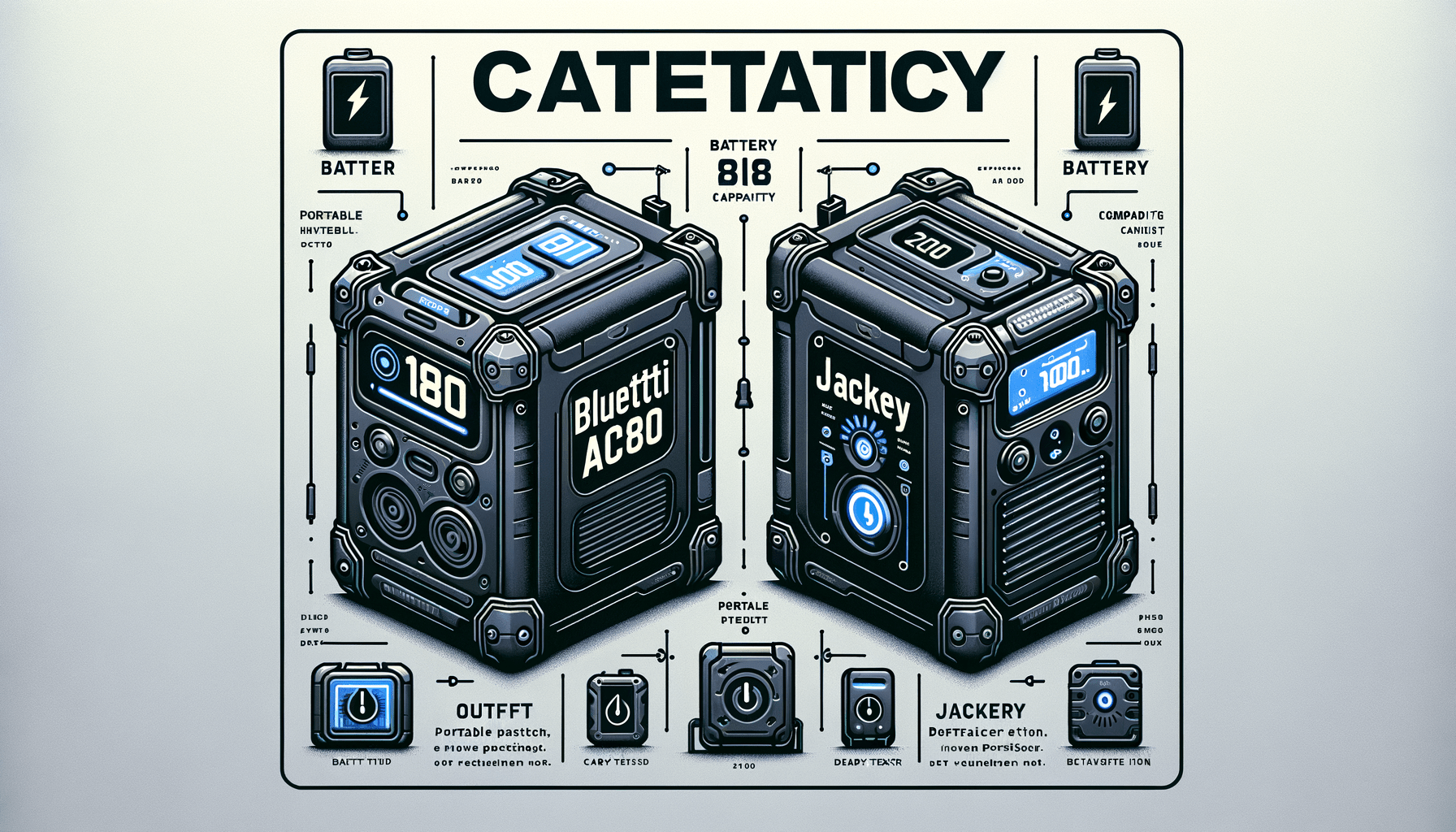When it comes to portable power, the marketplace is abuzz with options catering to every possible need. Today, we’re diving deep into two of the most talked-about power stations in the game: the Jackery Explorer 2000 Plus and the Bluetti AC60. Whether you’re looking to keep the lights on during an outage or power your next camping adventure, we’ve got the scoop on what sets these portable powerhouses apart.
Design and Portability
Right out of the gate, we see distinct differences in size and portability. The Jackery 2000 Plus is a beast, intended for serious power needs with its larger size. Measuring 14.7×18.6×14.1 inches and weighing in at 61.5 lbs, it’s definitely on the heavier side of portable. In contrast, the Bluetti AC60 aims for portability; it’s more compact and significantly lighter—although we don’t have the exact weight, they assure us it’s travel-friendly.
Power and Performance
The Jackery 2000 Plus brings the thunder with a massive 2 kWh capacity that’s expandable up to 24 kWh when linked with additional units and batteries. This feature alone makes it a frontrunner for folks needing reliable power for longer periods. On the other hand, the Bluetti AC60 starts at 403Wh but can expand as well, reaching up to 2,015Wh with added modules.
The inverter power rated at 600W with a surge up to 1,200W on the Bluetti speaks to the ability to handle high-wattage devices for short bursts. Jackery’s whopper doesn’t shy away, starting with a rated power that can leap up to 6000 watts, covering a broad range of demanding electronics.
Charging and Expansion
Jackery Explorer 2000 Plus offers a brilliant solution for solar charging, promising a full charge in about two hours with its optimal setup. Bluetti also emphasizes eco-friendliness but provides turbo charging that can fully recharge the AC60 within just one hour—this could be a game changer for quick turnarounds on the go.
Durability and Longevity
While both devices are outfitted with long-lasting LiFePO4 batteries, Jackery touts a 10-year lifespan and Bluetti boasts more than 3,000 charge cycles before seeing an 80% capacity reduction. Durability isn’t just about the internals, though. The Bluetti AC60’s robust aluminum casing and IP65 dust and water resistance rating give it an edge in tough conditions.
Smart Integration and Ease of Use
Both power stations stay current with smart app control, allowing users to manage the systems remotely. This kind of integration provides peace of mind whether you’re away from home or snug in your tent. Warranty-wise, Jackery offers a 3-year with an extension option, while Bluetti is confident enough to give a solid 6-year warranty right off the bat.
| Feature | Jackery Explorer 2000 Plus | Bluetti AC60 |
|---|---|---|
| Dimensions | 14.7×18.6×14.1 inches | 11.42×8.07×9.21 inches |
| Weight | 61.5 lbs | Not specified (lightweight) |
| Battery Capacity | 2 kWh expandable to 24 kWh | 403Wh expandable to 2015Wh |
| Rated Power | Up to 6000W | 600W with 1200W surge |
| Solar Charging Time | Approx. 2 hours | Based on solar input |
| AC Charging Time | Approx. 2 hours | Approx. 1 hour (Turbo Charging) |
| Battery Type | LiFePO4 | LiFePO4 |
| Lifespan | Up to 10 years | Over 3000 charge cycles |
| Water and Dust Resistance | Not specified | IP65 |
| Warranty | 3 years + optional extension | 6 years |
Deciding between the Jackery Explorer 2000 Plus and the Bluetti AC60 isn’t just about numbers—it’s about aligning with your energy needs and lifestyle. The Jackery is a juggernaut, likely to keep you powered through long-term outages or extended off-grid living. The Bluetti, being lighter and with rapid charging, could be the perfect companion for frequent travelers and adventurers who need quick top-ups.
Regardless of your choice, both the Jackery 2000 Plus and the Bluetti AC60 herald a new age of portable power solutions—efficient, reliable, and integrated into our smart, eco-conscious lives. So, pick your portable power station wisely, keeping your energy needs and environmental considerations at the forefront of your decision.




Leave a Reply